Wine Spotlight: Bold Elegance – South African Shiraz Unveiled
Interested in making South African Shiraz? Give us a call at 877-812-1137 to speak to a winemaking representative about your order.
Appearance:
In the glass, South African Shiraz commands attention with its deep, inky purple color. The richness of its hue hints at the robust character that awaits.
Aroma:
Upon the first swirl, the nose is greeted by an enticing bouquet of dark fruits and subtle spices. Blackberry and ripe plum take center stage, accompanied by a hint of black pepper and a touch of smoky oak (either French or American oak, medium toast). The aromatic profile is bold and inviting, setting the stage for the complex layers to unfold. (yeast suggestions: BDX, D80, D254)
Palate:
As the wine graces the palate, it delivers a symphony of flavors that reflect the warmth and intensity of the South African sun. Black cherry and blueberry dance alongside notes of dark chocolate and a subtle hint of vanilla from careful oak aging (either French or American oak, medium toast). The wine’s full-bodied nature is complemented by velvety tannins that add a luxurious texture, creating a well-balanced and deeply satisfying experience.
Flavor Profile:
South African Shiraz is a showcase of the varietal’s bold and expressive character. The dark fruit flavors are complemented by a savory undercurrent, with a touch of black pepper adding a hint of spice. The integration of oak is seamless, contributing to the wine’s complexity without overpowering its vibrant fruit profile.
Pairing Suggestions:
A robust Shiraz is a natural companion to hearty dishes. Pair it with a juicy grilled steak, lamb stew, or a rich, meaty pasta for a perfect match. Its bold flavors and well-structured tannins also make it an excellent candidate for aging, allowing the wine to evolve and develop further complexity over time.
Overall:
South African Shiraz is a testament to the region’s ability to produce wines of depth and character. It balances power with finesse, showcasing the winemaker’s artistry in capturing the essence of the grape and the terroir. It’s a wine that invites contemplation and celebration.
Interested in making South African Shiraz? Give us a call at 877-812-1137 to speak to a winemaking representative about your order. Cheers!
The Winemaker’s Think Tank: Vol 25 – Why is my wine evaporating?
What’s the Winemaker’s Think Tank?
Every Thursday we will post about a few frequently asked questions that our winemaker has answered. If you have a winemaking question you would like to have answered, please email us at support@juicegrape.com and we will try to get into next week’s post. Cheers! 🙂
Why is my wine evaporating?
Just like water or any other liquid, with prolonged exposure to air, wine can evaporate. When aging wine in an enclosed container such as a tank, carboy, or demijohn, the container should have an airtight seal via an inflatable gasket or an airlock and bung. This will help prevent against oxidation and will reduce the amount of evaporation dramatically. If you still see some evaporation happening in one of these closed containers, evaluate your bungs and seals as they may not be working properly.
The main source of evaporation in winemaking is through barrel aging. Barrels are a porous environment that allows the wine to “breathe” over time. This “breathing” process is essentially evaporation. The wine is exposed to air through the porous staves and small portions of the wine evaporate into the atmosphere. This has positive effects on the wine as it creates a creamier mouthfeel, can reduce the perception of acidity, and imparts oak flavor. The barrel must be filled monthly with additional wine to reduce the head space and replace the evaporated product. This will prevent the wine in the barrel from oxidizing. While the breathing process may be a source of frustration, as you witness your wine evaporating into thin air, it will help you to create a fuller, heavier, more lush wine.
We hope this information helps with your winemaking. If you have any follow up questions or winemaking questions in general, please email us at support@juicegrape.com.
Wine Wednesday: South African Cabernet Sauvignon
As the Spring Wine Grape Harvest Approaches, we thought we would check out some of the wines that South Africa has to offer.
Today we tasted a Cabernet Sauvignon. #HappyWineWednesday
WINE: Bob’s 2013 Overnight Express South African Cabernet Sauvignon
TASTING NOTES: On the nose are notes of raspberry, berry, flint, and oak. The palate is filled with flavor, yet soft supple tannins round out the mouthfeel nicely. A great wine to enjoy with grilled meats or a meaty pasta dish.
VITUCULTURE: The soil where these grapes were grown is considered “Clovelly, Stony Glenrosa soils”. Clovelly is a component derived from granite, usually red to yellow colored. It contains acidic compounds. It is found on mountain foothill slopes and on ranges of hills, with good physical and water retention properties. Glenrosa soils are typically compact, stony, and clean cut.
WINE REGION: Western Cape, 31 miles East of Cape Town
GEEKY THINGS: Wines from the Western Cape are where some of our Cabernet Sauvignon will be arriving from. Wines from these locations are often described as having a subtle mineral note which many believe is from the decomposed granite soils. The Granite Mountains are approximately 600 million years old, over 3 times as old as the soil in Napa where many of the Cabernet Sauvignon vines are grown.
Click to Download Tasting Notes
More information about our South African Grapes are on our blog. Check out the most recent “2017 South Africa Harvest” by clicking HERE.
Cheers!
The Musto Wine Grape Staff
Yeast Starter Instructions Up on Youtube!
Hello Winemakers!
We are excited to release our newest video – “Yeast Starter Instructions.” In the video Winemaker Frank Renaldi teaches us how to correctly create a Yeast Starter for your fermentation. Please feel free to visit our YouTube Page for more videos HERE.
Cheers! 🙂
Winemaking Classes Are BACK!!
Hey Guys!
As Wine Grape Season approaches we are starting to brush up on our winemaking skills. Below is our NEW Schedule of Winemaking Classes. Please contact Christina Musto via phone (877.812.1137) or email (cmusto@juicegrape.com) or sign up online!
We hope to see you there!
The only hands-on winemaking bootcamp in the area. No need to spend thousands. M&M Wine Grape Company is pleased to announce the start of a ten week class for beginner winemakers in the art and science of making wines. This course offers each student the opportunity of experiencing hands-on winemaking and producing their own five gallons of wine by the end of the semester. In addition to actually making wines, the course will cover the science behind modern wine making and fermentation techniques including additives commonly used by commercial wineries throughout the wine making world. Classes will be about 3 hours each Saturday afternoon, starting at 1:00 pm, in the offices and winemaking showrooms of M&M Winegrape Co, 101 Reserve Road, Hartford, Ct, 06118.
We are currently accepting enrollment for this 10 week course with lecture and hands-on labs. The cost is $300/student plus the cost of grapes for the 5 gallon batch.
The next class will start August 29th 2015
Click here for more information about the course.
This program primarily covers the basics necessary to understand the art and science of making wine. Students should leave the class with an overview of the winemaking process and prepared for a hands-on experience.
The entire spectrum of the process is addressed including cleaning, sanitizing, and preparing equipment, understanding and performing appropriate metrics, detailed steps needed to produce finished wine from fresh grapes, grape juice, frozen musts, and kits, bottling and storing wines. Discussions include equipment choices from manual to electric units, wooden barrels for storage, stabilizing and preserving wines for extended time, and other pertinent tops. The class consists on one three plus hour slide presentation/lecture with open Q&A, and tasting examples of home made wines. Students must be at least 21 years of age to participate in wine tasting/evaluation exercises.
COURSE OBJECTIVES:
- Introduce the basic practices of wine making.
- Provide an understanding and feel for the skills required to successfully make high quality wines.
- Introduce the student to the sanitary requirements necessary to consistently produce world-class wines.
We are currently accepting enrollment for this course. The cost is $49.95/student.
The next class will start TBD
Click here for more information about the course.
This program primarily covers laboratory skills needed in the art and science of making wine. This course compliments and should be taken after having taken the Intro to Wine Making (EDUIWM101) course.
In order to consistently make high quality wines the winemaker must perform a number of tests and functions to monitor and adjust the progress of the fermentation and aging process. This class discusses and demonstrates a number of such functions including acid titration, pH, sugar content, fining, etc., including alternate methodologies for sugar and acid titrations. Students must be at least 21 years of age to participate in wine tasting/evaluation exercises.
COURSE OBJECTIVES
- Introduce the basic laboratory practices of wine making.
- Provide an understanding and feel for the skills required to successfully measure fermentation progress.
We are currently accepting enrollment for this course. The cost is $49.95/student.
The next class will start April 21st 2015
Click here for more information about the course.
This program covers the basics necessary to understand the art of wine tasting and evaluation. Students should leave the class with an overview of the winemaking process and how to evaluate wines with confidence.
COURSE OBJECTIVES
- Introduce the basics of sensory analysis pertaining to wine
- Provide an understanding and feel for the skills required to be a wine judge and/or sommelier.
Students must be at least 21 years of age to participate in wine tasting/evaluation exercises.
We are currently accepting enrollment for this course. The cost is $39.95/student.
The next class is TBD
Click here for more information about the course.
Mulled Wine ~ Getting in the Holiday Spirit
This gallery contains 2 photos.
We hope everyone had a very Happy Thanksgiving. We have so much to be thankful for and it’s good to take a step back, reflect, and enjoy each others company.
Now that we are in the holiday spirit we have been experimenting with different winter wine recipes. One of them being Mulled Wine. Below is my recipe. I suggest pairing it with friends by the fireplace and a tasty charcuterie plate.
4 cups apple cider (or can use apple juice if you want it a little sweeter)
1 bottle of red wine (suggest cabernet, merlot, or a blend of both)
1 tablespoon – 1/4 cup of honey (depends on your sweet tooth)
2 cinnamon sticks
1 orange – juiced and zested
4 whole cloves
2-3 stars of anise (do to taste)
orange peels/wedges for garnish
Add the apple cider/juice, wine, cinnamon sticks, orange zest, orange juice, and cloves to a saucepan. Bring to a boil. Add stars of anise and honey to taste. Let it simmer for 8-10 minutes. Pour into mugs, add an orange peel/wedge for garnish, and enjoy!






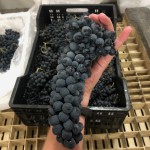
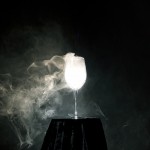
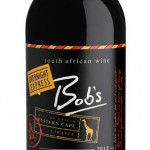

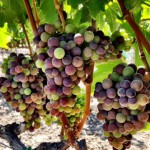
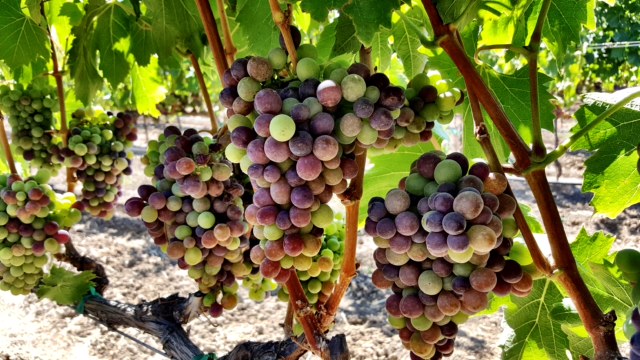
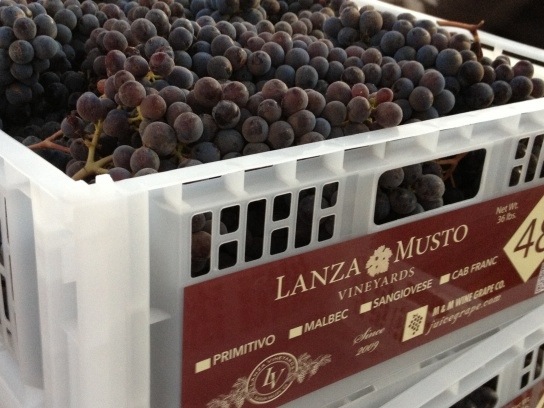
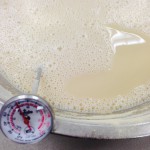
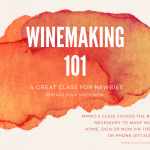
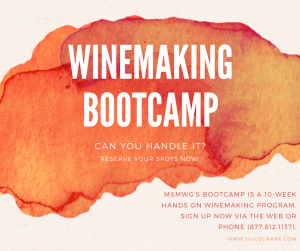


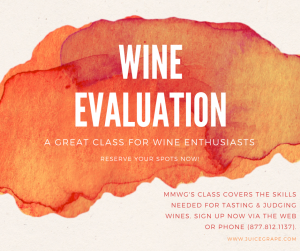
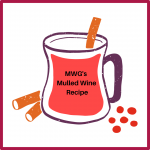

Recent Comments